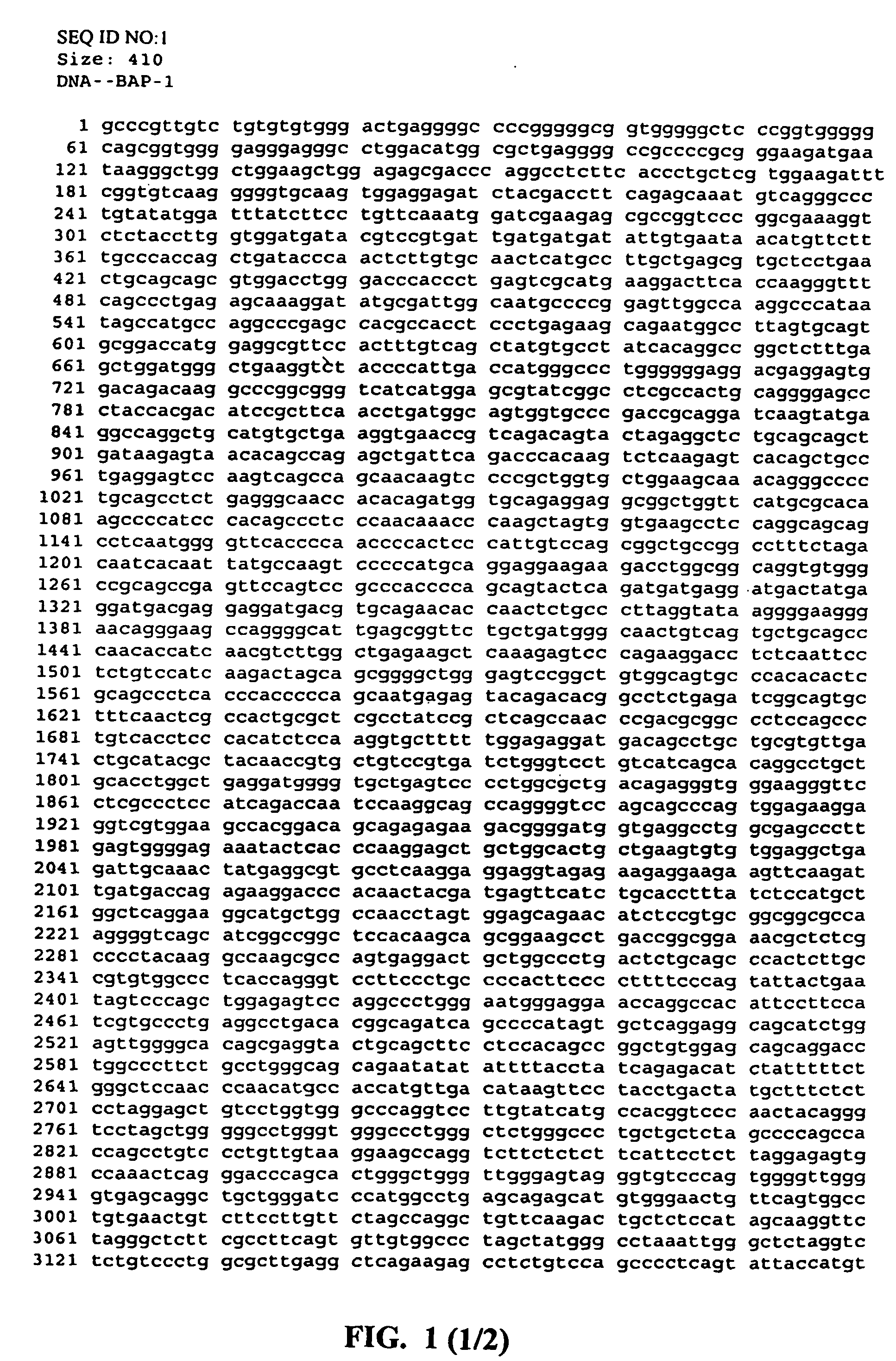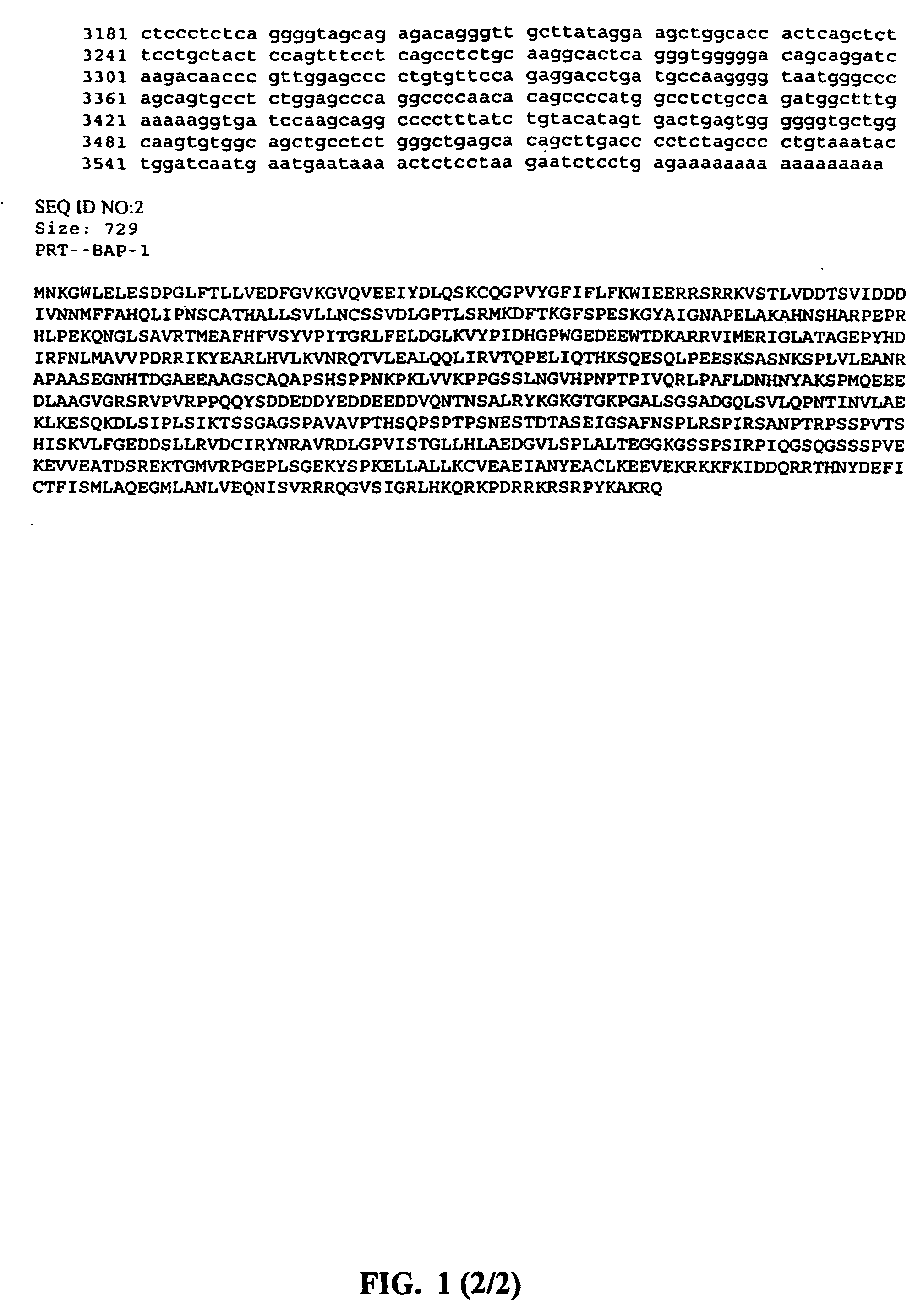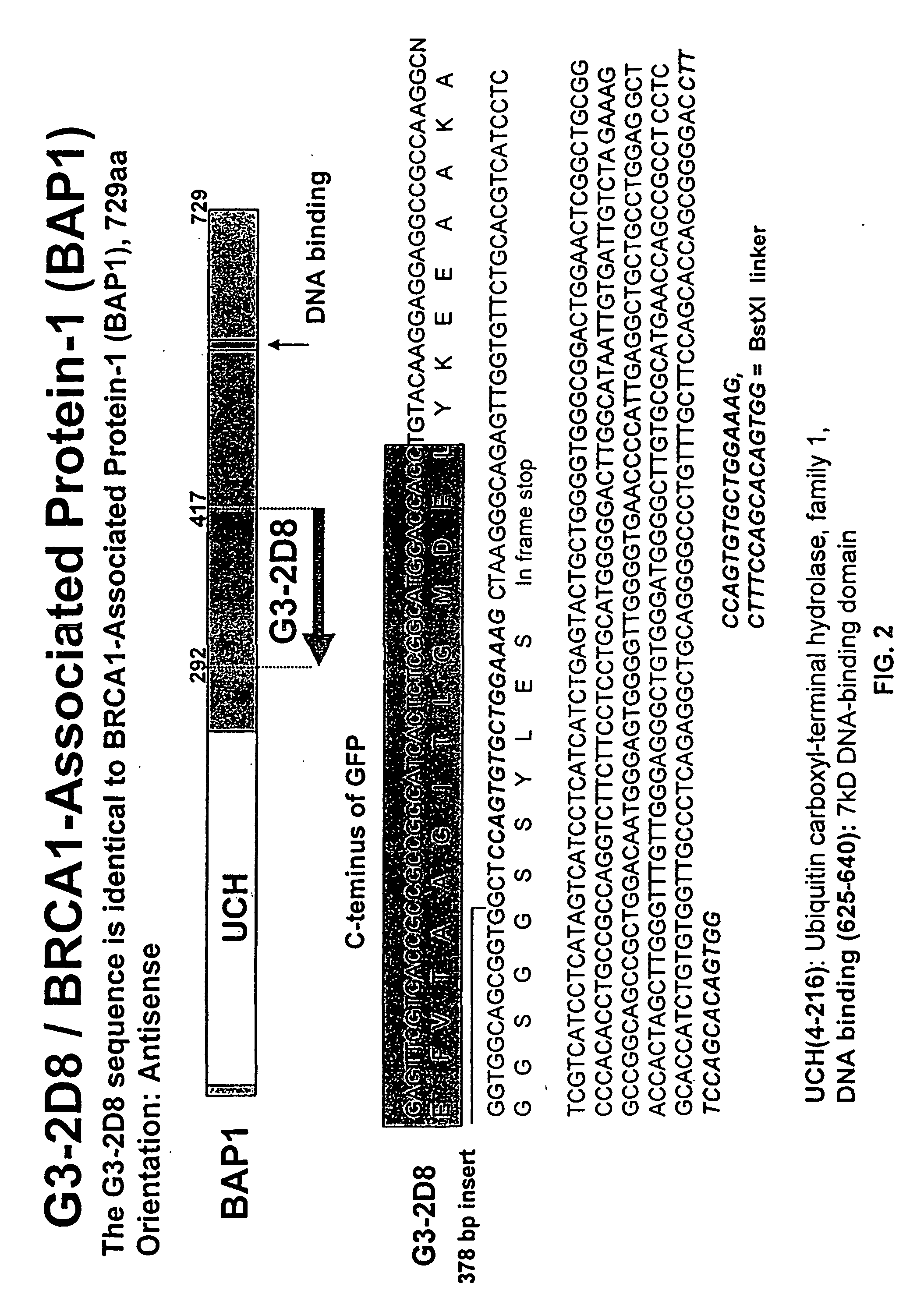Methods of assaying for cell cycle modulators
a cell cycle and modulator technology, applied in the field of cell cycle modulator assays, can solve the problem that the involvement of a protein in cell cycle regulation in a model system is not always indicativ
- Summary
- Abstract
- Description
- Claims
- Application Information
AI Technical Summary
Benefits of technology
Problems solved by technology
Method used
Image
Examples
example 1
Isolation Of Genes Which Cause Cell Cycle Arrest
[0283] A GFP C-terminal cDNA fusion library with a tetOff inducible gene expression system was constructed using standard techniques known to those of skill in the art. Clones from the library were used to transfect A549 cells. Transfected cells were then stained with cell tracker dyes to monitor the cell cycle. Cell tracker intensity correlated with p21 expression. p21-induced arrested cells are also resistant to retrovirus infection. After transfection with the cDNA library, cells that stained more brightly with cells tracker dyes were identified as cell cycle arrested cells. Cycling cells were eliminated by transfection with a retrovirus encoding the diphtheria toxin alpha chain. Cycling cells are susceptible to retroviral infection, but cell cycle arrested cells are not. Cell tracker positive cells, i.e., cell cycle arrested cells, were sorted into 96 well plates and expanded with doxycycline (Dox) treatment. AlamarBlue, an oxidat...
example 2
Identification of Antiproliferative Proteins
[0284] A549 cells were transfected with a clone containing a fragment of BAP-1, NP95, FANCA, DDX9, IGF1R, UBE2V1, aldehyde dehydrogenase, pyruvate kinase, glucose-6-phosphate dehydrogenase, HCDR-3, DDX21, ARK2, transmembrane 4 superfamily 1, ERCC1, or a fragment thereof. The transfected cells were stained with a cell cycle tracker dye. The BAP-1, NP95, FANCA, DDX9, IGF1R, UBE2V1, aldehyde dehydrogenase, pyruvate kinase, glucose-6-phosphate dehydrogenase, HCDR-3, DDX21, ARK2, transmembrane 4 superfamily 1, and ERCC1 transfected cells stained brightly with the cell cycle tracker dye, indicating that they were cell cycle arrested cells. Thus, BAP-1, NP95, FANCA, DDX9, IGF1R, UBE2V1, aldehyde dehydrogenase, pyruvate kinase, glucose-6-phosphate dehydrogenase, HCDR-3, DDX21, ARK2, transmembrane 4 superfamily 1, and ERCC1 were identified as antiproliferative proteins.
example 3
Assay for UBE2V1 Activity
[0285] UBE2V1 activity can be assessed using an in vitro ubiquitination assay as described in Sancho et al., Mol. Cell. Biol. 18(1):576 (1998). Briefly, UBE2V1 or a sample suspected of containing UBE2V1 is incubated with 125I-ubiquitin at 37° C. for 2 hours and conjugation of UBE2V1 to 125I-ubiquitin is measured.
PUM
| Property | Measurement | Unit |
|---|---|---|
| molecular weight | aaaaa | aaaaa |
| molecular weight | aaaaa | aaaaa |
| molecular weight | aaaaa | aaaaa |
Abstract
Description
Claims
Application Information
 Login to View More
Login to View More - R&D
- Intellectual Property
- Life Sciences
- Materials
- Tech Scout
- Unparalleled Data Quality
- Higher Quality Content
- 60% Fewer Hallucinations
Browse by: Latest US Patents, China's latest patents, Technical Efficacy Thesaurus, Application Domain, Technology Topic, Popular Technical Reports.
© 2025 PatSnap. All rights reserved.Legal|Privacy policy|Modern Slavery Act Transparency Statement|Sitemap|About US| Contact US: help@patsnap.com



